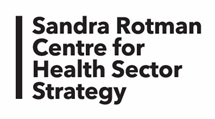Agenda (EST):
| 7:30am |
Logon and virtual networking |
| 8:00am |
Opening Remarks
Opher Baron, Distinguished Professor of Operations Management, Rotman School of Management
|
| 8:10am |
“Applied Artificial Intelligence in Healthcare: From Compute to Care”
Muhammad Mamdani, PharmD, MA, MPH, Vice President, Data Science and Advanced Analytics, Unity Health Toronto
|
| 8:40am |
“How Risky is that Risk Sharing Agreement? Potential Unintended Consequences of Six Common Pharmaceutical Risk Sharing Agreements”
Greg Zaric, Professor, Ivey Business School, and Editor in Chief of Health Care Management Science
|
| 9:10am |
"Pi in the Sky: Drone-delivered defibrillators for out-of-hospital cardiac arrest"
Timothy Chan, Professor, Industrial Engineering, Canada Research Chair in Novel Optimization and Analytics in Health, Department of Mechanical and Industrial Engineering, University of Toronto
|
| 9:40am |
BREAK |
| 10:00am |
“Emerging opportunities for health monitoring and prediction”
Ali Vahit Esensoy, PhD Adjunct Faculty | IHPME and MIE, University of Toronto, Senior Director, Data Science | Klick Consulting
|
| 10:30am |
“Predicting Delays in Queues with Invisible Customers”
Arik Senderovich, Assistant Professor at University of Toronto & Scientific Advisor, Product Strategy and Algorithms at mindzie
|
| 11:00am |
“A fast and granular agent-based simulation model of COVID-19”
Dionne M. Aleman, PhD, PEng | Associate Professor, Industrial Engineering, University of Toronto
|
11:30am
|
BREAK |
| 12:00pm |
Keynote Presentation “Bridging patient care silos: Co-location of cross functional teams to streamline patient flow”
Anita L. Tucker, Professor of Operations & Technology Management, Boston University Questrom School of Business
Dr. Christopher S. Manasseh, Clinical Associate Professor, Family Medicine, Boston University School of Medicine; Vice Chair of Family Medicine Inpatient and Hospital Services, Boston Medical Center
|
| 12:55pm |
Closing remarks |
| 1:00pm |
Optional breakouts (half an hour) |
| |
Register Now
Titles & abstracts:
8:10am-8:40am
"Applied Artificial Intelligence in Healthcare: From Compute to Care"
Muhammad Mamdani, PharmD, MA, MPH, Vice President, Data Science and Advanced Analytics, Unity Health Toronto
Abstract: Advances in data science and the application of artificial intelligence (AI) are having transformational impacts on society from smartphones to self-driving cars. Healthcare is among the most data-rich sectors and is well positioned to benefit from AI applications. While there has been considerable activity in health AI research, its application in clinical practice has been limited. The presentation will use case examples to review the development and implementation of data science and AI solutions into clinical practice to improve patient outcomes and hospital efficiency. Specific examples include the development and application of algorithms to improve staffing efficiency, predict emergency department patient volumes, and predict patient death and need for intensive care.
8:40am to 9:10am
"How Risky is that Risk Sharing Agreement? Potential Unintended Consequences of Six Common Pharmaceutical Risk Sharing Agreements"
Greg Zaric, Professor, Ivey Business School, and Editor In Chief of Health Care Management Science
Abstract: Background: Pharmaceutical risk sharing agreements (RSAs) are commonly used to manage uncertainties in costs and/or clinical benefits when new drugs are added to a formulary. However, existing mathematical models of RSAs ignore the impact of RSAs on clinical and financial risk. Methods: We develop a model in which the number of patients, total drug consumption per patient, and incremental health benefits per patient are uncertain at the time of the introduction of a new drug. We use the model to evaluate the impact of six common RSAs on total drug costs and total net monetary benefit (NMB). Results: We show that, relative to not having an RSA in place, each RSA reduces expected total drug costs and increases expected total NMB. Each RSA also improves two measures of risk by reducing the probability that total drug costs exceed any threshold and reducing the probability of obtaining negative NMB. However, the effects on variance in both NMB and total drug costs are mixed. In some cases, relative to not having an RSA in place, implementing an RSA can increase variability in total drug costs or total NMB. We also show that, for some RSAs, when their parameters are adjusted so that they have the same impact on expected total drug cost, they can be rank-ordered in terms of their impact on variance in drug costs. Conclusions: Although all RSAs reduce expected total drug costs and increase expected total NMB, some RSAs may have the undesirable effect of increasing risk. Payers and formulary managers should be aware of these mean-variance tradeoffs and the potentially unintended results of RSAs when designing and negotiating RSAs.
9:10am-9:40am
"Pi in the Sky: Drone-delivered defibrillators for out-of-hospital cardiac arrest"
Timothy Chan, Professor, Industrial Engineering, Canada Research Chair in Novel Optimization and Analytics in Health, Department of Mechanical and Industrial Engineering, University of Toronto
Abstract: This talk presents several research projects related to optimizing drone delivery of defibrillators to out-of-hospital cardiac arrest (OHCA) victims. The first project combines optimization and queuing to design a hypothetical drone network to reduce response time to OHCAs in a large region surrounding Toronto, Ontario. The second project develops machine learning-based dispatch rules so drones are prioritized to cases where they are most likely to beat an ambulance. The third project describes initial feasibility studies of actual drone flights to deliver defibrillators.
10:00am – 10:30am
“Emerging opportunities for health monitoring and prediction”
Ali Vahit Esensoy, PhD Adjunct Faculty | IHPME and MIE, University of Toronto, Senior Director, Data Science | Klick Consulting
Abstract: Klick Applied Sciences is an interdisciplinary research lab focused on developing digital technologies for health. One arm of our work entails investigating new approaches to measurement and prediction of health states using novel datasets, digital technologies and sensors. In this talk we will discuss the changing landscape of health data and how it enabled the Klick team to identify risk factors and symptoms for COVID-19 in the early days of the pandemic, develop a new biomarker of prediabetes, and reduce the clinician workload for symptom management for an autoimmune disorder.
10:30am to 11:00am
“Predicting Delays in Queues with Invisible Customers”
Arik Senderovich, Assistant Professor at University of Toronto & Scientific Advisor, Product Strategy and Algorithms at mindzie
Abstract: We consider queueing settings in which we observe only a subset of the arriving customers. These situations are prominent in healthcare environments in which the data on some of the patients is missing due to technological limitations or privacy concerns. For example, when the data is collected using a Real-Time Location System, some of the patients might not be wearing their electronic badges that track their locations during their visit. In such settings, we consider the problem of predicting delays of observed customers upon their arrival. In the paper, we start off by presenting an exact analysis of the expected delay for an observed customer in M/M/1 queues, which illustrates the analytical difficulties of the problem in more general cases. We perform an empirical comparison between the performance of the theoretical solution and machine learning (ML) approaches that use various levels of information available in simulated M/M/1 data. We show that ML methods based on simple temporal differences between so called observed `events of interest’ are competitive with our theoretical predictor. We present the dependence of the approach on the proportion of invisible customers and on the traffic intensity. Subsequently, we consider the prediction problem in more general queueing settings in which we are unaware of existing theoretical result for predicting expected delays. In a set of controlled experiments, we show that both temporal differences between `events of interest’ and the theoretical expected delay predictor that comes from the M/M/1 queue yield accurate prediction results when used by ML methods. These results support the robustness of the developed M/M/1 predictor and point to an advantage that simple (and readily available) temporal difference features offer compared to (labor-intensive) theoretical delay predictors.
11:00am to 11:30am
“A fast and granular agent-based simulation model of COVID-19”
Dionne M. Aleman, PhD, PEng | Associate Professor, Industrial Engineering, University of Toronto
Abstract: Most COVID-19 projections are based on compartmental models, which require only high-level information about a disease and population to make high-level predictions. For nuanced assessment of policy interventions to slow disease spread, agent-based simulation (ABS) models that treat individuals uniquely are more appropriate but can be computationally unwieldy and even intractable. The Medical Operations Research Lab’s Pandemic Outbreak Planner (morPOP) is a computationally tractable, memory efficient ABS that considers the unique demographic, comorbidity, and behavior characteristics of each individual. It has been used to model H1N1 and pandemic influenza in the Greater Toronto Area (6 million agents) and is currently used to model COVID-19 in Newfoundland & Labrador (520,000 agents). Specific scenarios examined with morPOP include school mitigation measures and the effectiveness of NL’s travel ban, allowing public health officials to make evidence-based decisions about appropriate measures to enact.
12:00pm – 12:55pm
Keynote Presentation
“Bridging patient care silos: Co-location of cross functional teams to streamline patient flow”
Anita L Tucker, Professor of Operations & Technology Management, Boston University Questrom School of Business & Dr. Christopher S. Manasseh, Clinical Associate Professor, Family Medicine, Boston University School of Medicine; Vice Chair of Family Medicine Inpatient and Hospital Services, Boston Medical Center
Abstract: Boston Medical Center’s Dedicated Observation Unit uses co-located, cross-functional teams. They are equipped to treat a wider variety of more severely sick patients than the typical observation unit and have a collocated cross-functional team structure. This enables use of exclusion criteria—rather than the typical inclusion criteria—which enables the unit to efficiently treat patients. They also can take more patients, freeing up in-patient beds for others. This research tests the impact of this approach on patient outcomes and length of stay.
Register Now
Hosted by:
Chair of Scientific Program: Opher Baron, Distinguished Professor of Operations Management, Rotman School of Management
Roundtable Co-Hosts:
|
 |
Sandra Rotman Centre for Health Sector Strategy
Driving Excellence in Healthcare Management - The Sandra Rotman Centre for Health Sector Strategy is a research, education and policy centre aimed at generating insights for governments, organizations and other key stakeholders facing complex healthcare challenges.
|
 |
TD Management Data and Analytics Lab
The TD Management Data and Analytics Lab promotes cutting-edge analytic tools in business through teaching and research and is a central source of knowledge and expertise in data science, AI, and machine learning applications.
|